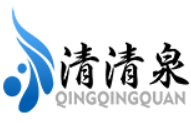
- Qingqingquan
- Shandong
- 20 days
- 300 units per month
Water reuse technology can save water and reduce emissions, the equipment is divided into biological, physical and chemical, membrane treatment method, water treatment equipment with automatic control, water level adjustment and other practical features
Water Reuse Treatment Equipment
I. Overview of Water Reuse Technology
Water Reuse, urban sewage or domestic sewage after appropriate treatment, to meet certain water quality standards, can be used for non-potable purposes of miscellaneous water, such as toilet flushing, garden irrigation, road cleaning, urban fountains and so on. Its water quality index is between the upper water (drinking water) and lower water (sewage), hence its name. Water technology can not only effectively save freshwater resources, but also realize the harmless treatment of sewage, which is an important way to prevent water pollution and alleviate the shortage of water resources. The state explicitly requires 10% of the sewage treatment volume for further treatment and then reuse, and “urban sewage treatment and water reuse project” as one of the nine key projects supported by the state, for the promotion and application of water reuse technology provides strong support.

Ⅱ. Classification and characteristics of water reuse equipment
1. Biological treatment method
• Principle: Use of microorganisms in the water adsorption, oxidation and decomposition to remove organic matter in sewage.
• Classification: including aerobic and anaerobic microbial treatment, generally aerobic treatment.
2. Physicochemical treatment
• Principle: combining coagulation and sedimentation (air flotation) technology and activated carbon adsorption to improve water quality.
• Characteristics: Compared with the traditional secondary treatment, the water quality is significantly improved, but the operating costs are higher, suitable for occasions with higher water quality requirements.
3. Membrane treatment
• Principle: Ultrafiltration (microfiltration) or reverse osmosis membrane treatment, through the selective permeability of the membrane to achieve water purification.
• Characteristics: SS (suspended solids) removal rate is very high, small footprint

III. Commonly used wastewater deep treatment methods and comparisons
1. Ultrafiltration
• Principle: the use of hollow fiber membrane filtration of wastewater.
• Advantages: the suspended solids in the effluent can be basically 0, high treatment efficiency.
2. Ion exchange method
• Principle: the use of anion and cation resin replacement of heavy metals in the ionic state of wastewater.
• Advantages: can increase the number of ion exchange columns to adjust the concentration of heavy metal ions in the effluent.
3. Reverse osmosis
• Principle: the use of high-pressure wastewater through a semi-permeable membrane, to overcome the osmotic pressure so that water molecules through the semi-permeable membrane, to achieve the separation of salt and water.
• Advantages: good treatment effect, can remove most of the dissolved salts and organic matter.

Ⅳ. the function of water reuse treatment equipment
1. Automatic control system: the whole process of membrane bioreactor adopts automatic control system, which reduces the operation and management costs and improves the treatment efficiency.
2. Automatic water level control: according to the water level in the bioreactor, the lifting pump is automatically turned on or off to ensure the stable operation of the system.
3. Automatic control of circulating pump: automatically turn on or off the circulating pump according to the water level in the water storage tank to realize the recycling of water resources.
4. Automatic control of dosing pump: automatically turn on or off the dosing pump, and the dosage can be adjusted according to the need to ensure stable treatment effect.
5. Membrane cleaning, disinfection program automatic operation: regular automatic operation of the membrane cleaning, disinfection program to extend the service life of the membrane, to ensure the quality of the water.
6. Motor protection: the motor is equipped with overcurrent and overload protection to ensure the safe operation of the equipment.








































